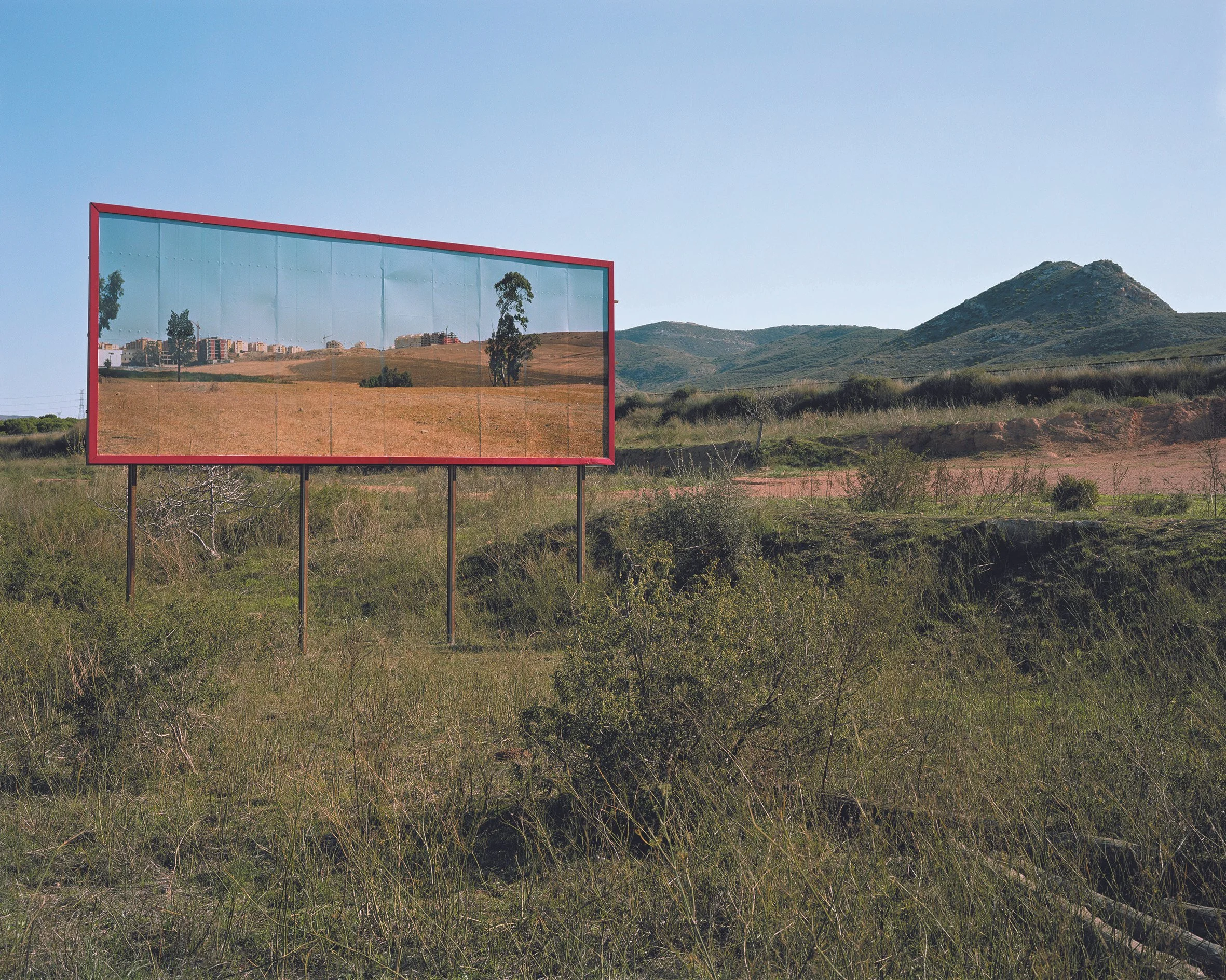
Imported Landscapes
Site specific installation and c-type photographs
Installation view, My Sister Who Travels, The Mosaic Rooms, London, 2014
The plate of Africa is moving at a rate of 1cm per year against and underneath the Eurasian plate. In ten to fifteen million years, the Mediterranean Sea will no longer exist.
The landscapes of southern Spain and northern Morocco share many geographical features including climate, flora and fauna, as well as a history of trade and mobility. In 711, Berber tribes straddled the Mediterranean Sea, at its narrowest point only 14 kilometres, to build a Muslim empire in what was then al Andalus. They were forced out in the 1400s and since then Spain has retained possession of Ceuta and Melilla. During the last century it further colonised northern Morocco. Many Moroccans currently provide cheap labour for the agricultural industry in southern Spain, and those that are able invest money in property along the rapidly developing northern Moroccan coast.
To consider these connected and overlapping Mediterranean landscapes Corinne Silva travelled along the northern Moroccan coast from Tangier towards the Algerian border, and made a series of landscape photographs. She then created an intervention in the Spanish landscape by installing three of these images on 8 by 3 metre billboards in specific locations in the region of Murcia.
The billboards are a reminder that landscapes themselves are palimpsests. Each individual’s actions actions can be traced in the landscape. The act of placing one landscape inside another - the southern hemisphere into the northern - creates a space to contemplate not only their shared topography but also the complex web of their ongoing connection of trade, mobility and colonisation.
Billboard installation part of Manifesta 8 Paralelos
New suburb of Tangier placed in former mining region La Unión, Murcia
Site-specific installation and analogue c-type photograph
179cm x 143 cm
2010
Port Tanger Med placed in highway leading to retail park, Murcia
Site-specific installation and analogue c-type photograph
179cm x 143 cm
2010
Resort town of Al Hoceima placed in former industrial zone, Cartagena
Site-specific installation and analogue c-type photograph
179cm x 143 cm
2010









